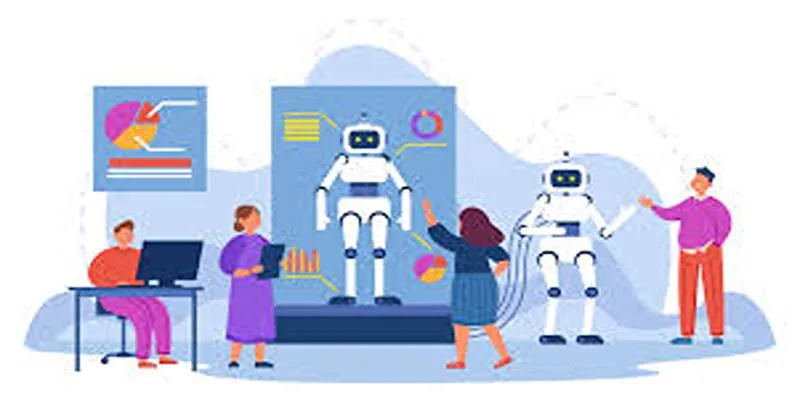Robotic Process Automation (RPA) technology is revolutionizing how businesses operate daily. Companies leverage RPA to automate rule-based and repetitive tasks, such as data entry, billing, and report preparation. By minimizing the need for human intervention, RPA tools help businesses reduce costs and enhance efficiency. These automation tools allow teams to focus on more valuable activities, driving productivity and operational excellence.
Today, businesses of all sizes are exploring automation software solutions to boost output. RPA not only minimizes human errors but significantly improves accuracy. This, in turn, accelerates operational speed and frees up critical staff time. For companies aiming for rapid growth, RPA tools are a smart investment. If your organization seeks higher productivity and reduced expenses, adopting robotic process automation solutions could transform your daily operations.

Understanding the Core of RPA Technology
Robotic Process Automation simulates human actions digitally through software, without the need for physical robots. Instead, it uses bots to interact with digital systems, performing tasks like copy-pasting, moving files, gathering data, and clicking. RPA can operate concurrently across various applications, adhering to specific rules set by business users or developers. Many tools offer simple bot creation using drag-and-drop interfaces.
RPA bots are consistent, tireless machines that handle tasks uniformly, enhancing speed and accuracy. While RPA is primarily used to expedite daily business tasks, it also lays a solid foundation for digital transformation by managing high-volume activities with fewer errors.
How Does RPA Work Within a Business Process?
RPA seamlessly integrates with existing systems without modifications, reading screens just as a human would. Bots log on, input data, and validate forms, following established guidelines and logic. Businesses can train bots to handle HR records, invoicing, orders, and emails. Bots can automatically manage tasks triggered by specific events, ensuring accountability by tracking every action for auditing and evaluation purposes.
Bots operate in the background, without disrupting users, and can be easily stopped or updated. Deploying RPA doesn’t require advanced coding skills; templates allow IT teams or business users to create bots swiftly. RPA scales quickly, with the ability to clone bots or assign them more work as tasks increase, enhancing business agility.
Key Business Benefits of RPA Implementation
RPA helps reduce costs by automating high-volume tasks, cutting labor and overtime expenses while speeding up processes. Tasks that once took hours can now be completed in minutes. By following strict logic, RPA tools reduce human errors, greatly improving data accuracy. Employees gain more time to focus on complex assignments, increasing job satisfaction. Additionally, RPA supports compliance standards by ensuring rule-based consistency and maintaining logs, which is crucial for heavily regulated industries.
Scalability is another advantage of RPA. As demand grows, businesses can easily add more bots. RPA works well with older systems, avoiding costly upgrades by overlaying existing tools. When computers handle simple inquiries, customer service improves, allowing agents to focus on complex support. Overall, robotic process automation techniques enable faster, more consistent operations, leading to enhanced customer satisfaction, quicker service, and higher quality outcomes.

RPA Use Cases Across Different Industries
RPA serves various sectors, including finance, logistics, and healthcare. In finance, bots handle data reporting, loan processing, and billing, enabling banks to process payments more quickly and accurately. In healthcare, bots manage claims processing and patient records, enhancing service speed and accuracy. Retail bots manage returns, update inventory, and log consumer comments and orders. In logistics, bots track goods and schedule deliveries.
RPA completes customs forms and document inspections, assists with payroll and onboarding in HR, and helps insurance companies process claims and validate information. In manufacturing, bots track supplier networks, while in education, they manage student information and grades. Bots enhance speed and accuracy across industries, reducing errors and delivering faster results. As RPA evolves, more sectors find value in automation solutions, paving a straighter path towards digital transformation.
Integrating RPA With AI and Other Technologies
RPA handles structured, rule-based tasks independently but becomes more powerful when paired with artificial intelligence (AI). AI enables machines to understand unstructured data and natural language. Machine learning allows bots to learn from patterns and improve over time, a combination known as Intelligent Automation. Bots can now analyze documents, read emails, and respond to inquiries. Chatbots merge RPA with AI to provide efficient customer support.
Companies use this synergy to automate decision-making and enhance predictive analytics. When combined with Optical Character Recognition (OCR), bots can scan documents and extract key information. RPA integrates with ERP systems and cloud services, ensuring smooth data flow across multiple systems. This integration reduces system and departmental disruptions, maintaining uniformity. As AI tools proliferate, RPA systems become more powerful, offering new creative possibilities and efficiency opportunities.
Challenges and Best Practices in RPA Adoption
RPA adoption comes with challenges. Poor planning can delay results, so companies must select the right processes for automation. RPA may not suit complex or evolving tasks, and some tools require training for effective operation. System changes demand ongoing maintenance for bot functionality. Addressing employee concerns about job loss is another challenge; clear communication is essential to reassure staff that bots supplement rather than replace jobs.
Continuous support is crucial. Companies should monitor performance and swiftly correct errors. Regular assessments ensure bots remain effective. Choosing a reliable vendor is vital, as good support and training simplify RPA implementation. By following best practices, businesses achieve smoother automation journeys and avoid costly mistakes. Preparation, training, and teamwork are keys to successful RPA adoption.
Conclusion
RPA technologies offer businesses a smarter way to handle daily tasks, enhancing accuracy, reducing costs, and accelerating processes. Automation software solutions save time and streamline operations across various industries. By relieving staff of repetitive tasks, robotic process automation solutions boost efficiency, allowing them to focus on more meaningful work. When combined with artificial intelligence, RPA unlocks even more potential. With careful planning and robust support, RPA can be incredibly beneficial, preparing companies for growth and digital transformation.
 zfn9
zfn9























